The Midnight Walk review
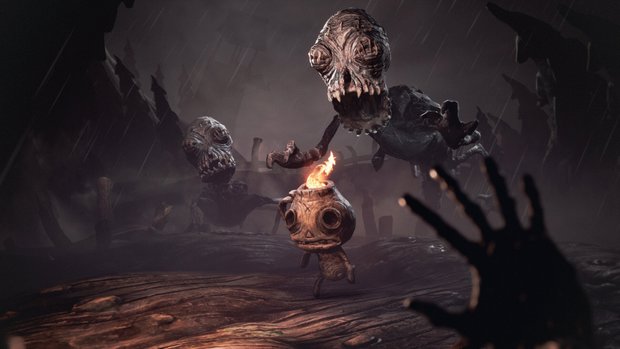
- 0 Comments
Dark fantasy stealth adventure is an enchanting stroll down a gorgeously nightmarish hand-sculpted road alight with creative fire
I have loved stop-motion animation ever since I was first introduced to the film works of Ray Harryhausen at a young age, so from the moment I first laid eyes on The Midnight Walk, I couldn’t wait to see what developer MoonHood’s new dark fantasy world made entirely from clay and cardboard would bring to the table. Now that I have experienced the complete journey, I am happy to report this is one of the most beautiful game worlds ever realized, with a deeply emotional narrative. It may not be a particularly challenging jaunt, but the captivating story and gorgeous environments left me mesmerized and have stuck with me long after the credits rolled.
The Midnight Walk wastes little time in thrusting you into its macabre setting: You awaken in darkness as a creature known only as The Burnt One, as you are described by the mysterious narrator. The game is experienced entirely in first person (on either flat screen or VR if you so choose), and initially your vision is blurry and sounds appear distant and muddled. As you move down a long hallway, you are provided two separate gifts: a set of eyes, and a set of ears. After receiving these gifts, you reattach these clay organs and both your vision and hearing become clear. When you close your eyes, the world appears as a dark void filled with floating embers but your hearing is dramatically increased, to the point where you can hear sounds that lead towards hidden objects you would be otherwise oblivious to while making your way through the world.
Soon after this, you come across a strange symbol of an eye glowing a faint blue light. Upon looking directly at the symbol and shutting your eyes, you hear a loud pop and suddenly you open them again to find yourself at a different location entirely. Nearby, there is a large box of matches as tall as you are, and after taking and lighting one, you notice candles to be lit around you as your match slowly burns towards its end in real time to indicate it will only briefly be usable. Among the candles, however, there is an outline of what appears to be a small boy with a jack-o-lantern face sculpted into a pot as his head. As you approach the unmoving boy, you see there are bits of charcoal within his head that appear to be long dormant. You hold out the lit match to the coals, and suddenly this peculiar Potboy springs to life.
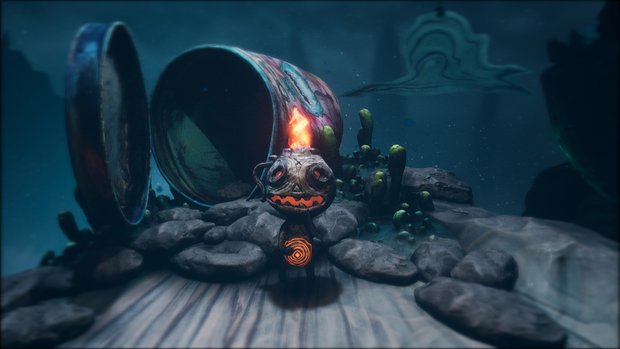
At first Potboy runs away, frightened of you – he appears to be untrusting of strange, burned humanoid creatures who, like himself, cannot speak. But there are coals nearby, along with a helpful paper note you can pick up that states Potboy loves to eat coal. You pick up one of these morsels for the boy to entice him to wander closer, and as he approaches you toss him the offering. He cheerfully accepts the gift and munches down, and a new friendship is born. You and your little companion start down the road together, until you meet a strange man sitting by a fire pit with a skeletal face and guitar who seems to know who (or what) you both are. He remarks that you must be headed for Moon Mountain off in the distance, and after some additional cryptic comments he sends you off on your way to travel down the titular path.
The Midnight Walk is what you get if you combine Journey with The Neverhood and throw in a large helping of The Nightmare Before Christmas. The hand-crafted world is absolutely stunning, with multiple places where I just stood to take in the artistry on display. Everything here is molded in clay, and the meticulous attention to detail in the stop-motion animation and environmental design consistently blew me away. The game is split into six chapters, and each takes place within a specific area of the Midnight Walk. One is an old-timey village inhabited by disembodied heads who spit insults at you and Potboy as you walk by due to your upright posture with all your limbs intact; another is a seemingly abandoned, frozen-over coal mining ghost town with a dark secret. Every locale is incredibly distinct in its visual design and themes explored, but they never feel too outlandish or ill-fitting with the rest of the game world.
Perfectly complementing the stunning visuals is an orchestral score that is hauntingly beautiful. While largely melancholy, there are several occasions where the soundtrack hits a more whimsical tone, with saxophones honking in time with Potboy excitedly jumping down the road. I was particularly impressed with the part where you have to avoid chilling winds, with each gust being accompanied by a loud crescendo of instruments. I was at times genuinely moved by the soundtrack, as well as terrified when screeching violins signaled the fast approach of a hostile monster.
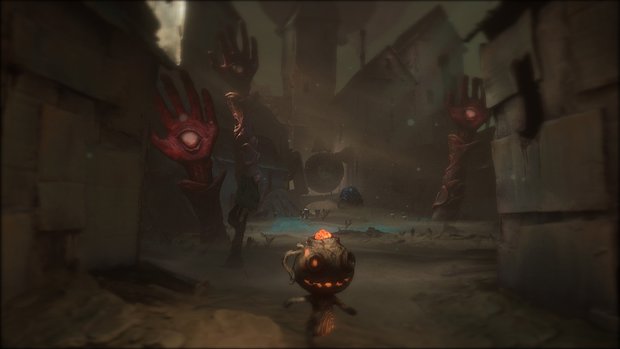
You control The Burnt One exclusively through WASD and mouse controls (or gamepad if preferred), with a run key you can toggle on. You can pick up various usable items – usually keys or key-adjacent objects needed to open doors – which can then be viewed in your inventory), but there are also non-usable collectible items to find inside curious small portholes you can open up and loot during your travels. Examples include vinyl records of in-game music and miniature figures of the characters you meet. Every item you collect, both necessary and optional, has a written text description accompanying it, which provides tons of additional background lore. The collectibles can be viewed inside your traveling house companion Housy from either the main menu or during predetermined moments during the story. (Yes, there is a sentient house named Housy who joins you along the long walk at various points.)
Most of the gameplay can be split into three distinct styles – exploration, puzzle solving, and stealth. Exploring allows you to soak in the scenery and meet the majority of other characters who call the Midnight Walk home. Your jaunt is a linear affair moving from location to location along the long road, but this is by no means a bad thing. There are no dialogue trees, but you can walk up to any non-hostile character and they’ll speak to you when prompted.
While The Burnt One and Potboy don’t talk outside of the latter's adorable little emotive grunts, every other character you meet is fully voiced. The style of voice-over is whimsical yet delightfully twisted, with standouts being the narrator, whose actor speaks as if reading a dark children’s fairy tale, and the cackling Moonbird, who ended up as my personal favorite character with its performer conveying a delightfully sinister aura in all interactions. It isn’t always clear who is really friend or foe, and the narrative mysteries often unfold in surprising ways that subvert initial expectations. Even if you aren’t outright attacked by a creature with sinister intentions, things are not always what they may first seem.
In between taking in the sights and conversing with the locals, the remainder of your 6-8 hours traversing the Midnight Walk will be spent solving puzzles or avoiding terrifying monsters. Puzzles usually revolve around a combination of sight/sound with the use of fire. Your ability to find mysterious glowing eyes in the environment and close your own causes various effects – typically either teleporting you to another location, or in some cases opening up new pathways. Your hearing is also heightened while your eyes are shut, and there are times you must use sound to zero in on its source. If you're using keyboard and mouse, only sound cues are present when closing your eyes, but controller vibrations are also synched with these sounds when using a gamepad. Once closer to the source, the sound will get louder, like the jingling of a key or the rattling of bones.
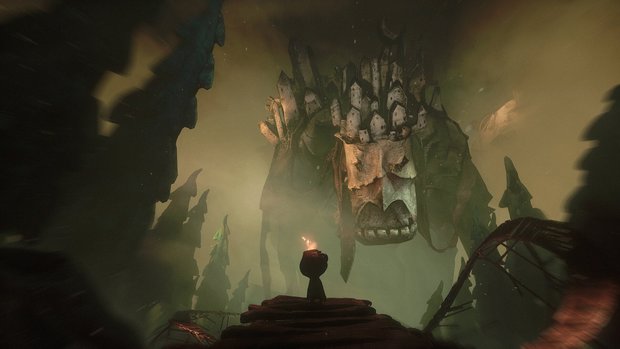
Along with using the large match boxes scattered throughout the Midnight Walk, The Burnt One can call upon Potboy’s flame with a click of a button to tell him where to go. This can be used to help light various objects in the environment, from candles to dormant gas engines. Objects that can be set ablaze are indicated by a small fire icon. While the matches used by The Burnt One slowly burn down, Potboy’s flame is lit indefinitely. This is key in getting fire to hard-to-reach areas, or to have Potboy light a flame on one side of a room while The Burnt One lights another flame with a match on the opposite side. About a third of the way through the game, you also gain the ability to suck up and shoot up to three matches using a handy match launcher to light fires at a distance. You can briefly stun monsters by shooting them in a pinch, but it won’t offer much protection from danger. Instead of being a dealer of death, this tool proves invaluable in solving flame-based teasers that would prove otherwise unreachable.
Unfortunately, while they are thematically relevant to the game's narrative, the puzzles are all incredibly simple. The solutions are typically over-signposted through environmental clues, to the point that completing a puzzle is more a matter of running through the motions than overcoming a challenge. A room where there’s a door with four markers, and four unlit candles scattered around? It’s not much of a leap to find the objective there. I did enjoy using fire in combination with the eye closing mechanic to progress, but I would have liked to see less obvious indications of how to arrive at a solution.
Fire is a major motif in both The Midnight Walk’s puzzles and themes, and in every chapter there is a role for your flame to play. But in a world where everything and everyone craves fire, there are bound to be those who wish it for themselves – or worse, want to snack on a wandering burned bipedal individual. This leads to the stealth sections, where you are stalked by terrifying monsters who won’t hesitate to tear you limb from limb. While the denizens here are already unsettling to look at, the creatures who hunt you are on a different level entirely. Among the first creatures you encounter are long, spindly skeletal aberrations with their eyes sewn shut, and if you are detected they will zero in and begin chasing you down. While Potboy is able to retreat into his pot-head like a turtle to avoid damage from these creatures, unfortunately The Burnt One isn’t so lucky. Thankfully, every area with a hostile monster has safe zones where you can crouch down and retreat into. Most sections like this will have a preset patrol pattern the monster (or monsters) will adhere to, and you will need to duck from safe zone to safe zone until you are clear of the area.

If you are caught in the open, you will be met with a sudden end accompanied by grisly sound effects of The Burnt One being devoured (thankfully without a visual). Surprisingly, though, death isn’t much of a setback here, as there are numerous stone coffins littered throughout the world that serve as the game’s checkpoint system. Whenever you pass a coffin, a small icon at the bottom of the screen will denote the game auto-saving. If you meet an untimely demise after that point, you will reawaken from the coffin with Potboy excitedly welcoming you back as if nothing had happened. These checkpoints are typically at the entrance and exit of any area where a monster is patrolling, so once you’re through you’re golden. This made the stealth sequences largely trivial, as I just crouched or ran by the monsters until I got to the next safe zone and kept repeating if I got caught beforehand.
While there are a smattering of enemy varieties to contend with along your journey, you will be seeing a lot of the same types of monsters repeated in different sections. I loved the creature designs, but I would have preferred to see more variations of them – or at least different patterns used when trying to hunt me down. There’s some sections where puzzle solving works in tandem with avoiding these creatures, i.e. having to light a fire to distract a creature to get by, or having to close your eyes while a creature is running towards you in order to trigger a stone eye before they barrel down on you. These trials were a welcome change of pace compared to the simple crouch-hide-repeat structure of most encounters, and I would have liked to see even more puzzle integration for these sections.
These are minor issues when compared with the quality of the narrative, however. I won’t spoil anything here, but The Midnight Walk weaves together themes that will surprise and challenge you to not judge a book by its cover. The bond between The Burnt One and Potboy grows significantly through the trials they face along the path to Moon Mountain at the end of the twisting roads of the Midnight Walk. Seeing Potboy go from running scared of The Burnt One to willingly rushing out behind a terrifying creature to light a fire needed to save you was amazing to behold.
Each individual chapter has its own self-contained story as well, and every one of these is incredible on its own merits. The history of the dreaded sharp-toothed Molgrim creatures that terrorize the severed heads, and the truth about the thief who led a once-thriving mining town to ruin, to name just two, are a joy to uncover. The tale never beats you over the head, and a lot of the backstory is left for you to find in either the collectibles or “Shellphones” that act like pre-recorded audio logs. None of these optional items are required to enjoy the main story on its own, but they serve as a fun additional layer of narrative complexity for those who want to uncover everything the game has to offer.
Final Verdict
The Midnight Walk is an experience I will be thinking about for a long time to come. Its presentation alone makes it an instantly appealing trek into the shadowy abyss of a twisted clay world, but the tale of a strange, burned-out creature traveling down a long, road fraught with danger with their mischievous pot boy companion push it way over the top. It may not be much challenge to traverse, but with the strength of its stunning presentation and richly layered story, it doesn’t need to be. A little more enemy diversity would be welcome, but even without it this game is a work of art, and its powerful conclusion left me feeling a warmth that surprised me considering how cold and dark much of the journey to get there is. It’s no traditional adventure, but if you can handle a little light action with your adventuring, then put on your best hiking boots and take a wander of your own down the Midnight Walk. But be sure to bring along some matches, just in case.
Hot take
The Midnight Walk is a stunning achievement in visual, audio, and narrative design. It may not present much challenge in overcoming its trials and tribulations, but the touching journey of The Burnt One and Potboy through a dark, disturbing hand-sculpted world of clay will surely light a spark that warms your soul.
Pros
- Stunning art direction with beautiful stop-motion animation in a fully realized clay world
- Symphonic musical score adds an additional level of emotional depth
- Powerful story that allows for player discovery to reveal its secrets
- Breadth of locales differ wildly in design while maintaining thematic consistency
Cons
- Simple puzzles are overly clued
- Easy stealth sections with little enemy variety
Sam played The Midnight Walk on PC using a review code provided by the game's publisher.


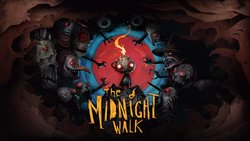
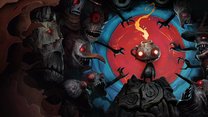
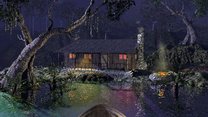





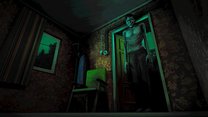
0 Comments
Want to join the discussion? Leave a comment as guest, sign in or register.
Leave a comment